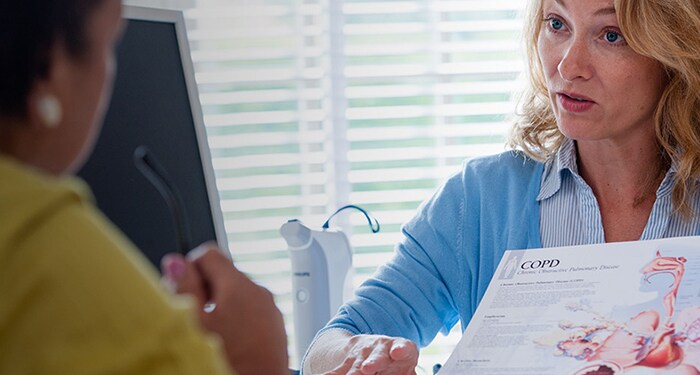COPD on the road:
5-Steps to preparing patients for travel
With the right tools and guidance, COPD patients can safely and successfully travel. Discover 5 steps for setting your patients up for success when they’re hitting the road.
A patient with COPD comes to you with news that she’s taking a family vacation. But, what should be an exciting event is becoming a major pain point as she stresses about managing her COPD with the strain of travel. Managing COPD is an ongoing need for patients, but it shouldn’t restrict them from living their lives. If a patient wants to travel, you can empower them with the tools and knowledge they need for a successful trip. Here are 5 steps for making sure your patients are well prepared to make the most of their travel plans.
1. Determine the mode(s) of transportation
One of the biggest factors when traveling with COPD is the mode of transportation, especially for patients who require supplemental oxygen. Once you’ve established how your patient will be traveling, you can educate them on what to expect and how to handle various situations to ensure a smooth journey.
2. Consider any potential risks at the destination
Any time patients are in a different environment, they can be exposed to an array of new triggers that can exacerbate COPD symptoms. It’s important that you talk with your patient to understand the details of their travel plans. Use this discussion to point out potential pitfalls and discuss what can be done preemptively to avoid irritants.
Consider things such as:
By bringing potential problems to the forefront, your patients will be better prepared to succeed in their destination.
Reaching new heights
COPD and altitude
Higher altitudes can make COPD symptoms worse. Whether traveling on a plane or visiting a destination with a higher elevation, COPD patients should know the warning signs and symptoms of altitude sickness. This condition, which occurs as the body tries to adjust to lower oxygen levels, typically happens at about 8,000 feet above sea level. While it can happen in seemingly healthy people, people with COPD or other respiratory conditions have a higher risk and can experience more severe symptoms.
Initial symptoms include:
If left untreated, symptoms can become more severe and can affect the heart and nervous system:

Altitude sickness can be extremely dangerous, especially if it goes untreated. But by talking with your patients about any upcoming travel, you can help them recognize the symptoms and take proactive steps to prevent it from interfering with their plans.
3. Discuss any activities that could worsen symptoms
Once your patient arrives in their destination, what will they be doing? While some people’s idea of vacation is relaxing on the beach, others enjoy hiking or biking. It’s critical that your patient recognizes how various forms of activity can have drastically different impacts on their COPD symptoms. Identify what their day-to-day activities of the trip will involve and work with your patient to determine what they can do to keep symptoms under control without missing out on the fun.
4. Determine what the patient will need for their length of stay
Once you have all the details, the next step is to make sure your patient has everything they need for a successful trip. Create a checklist of supplies, including what prior arrangements should be made. Consider things such as:

Ensure the patient has enough medication to last beyond the duration of their trip and that all medication is kept in their possession, not in checked luggage.

Make sure the patient has visibility to their oxygen levels. This will help them maintain better control of their COPD throughout their trip.

Suggest that your patient get a durable carrying case for easier portability.

It’s always a good idea to have to have a backup and even some extra cannula. Have your patient contact their supplier to make arrangements for delivery.
5. Develop an on-the-road action plan
Patients are encouraged to have a COPD action plan at home, but it’s equally as important that they take one on the road. Regardless of their destination, patients need an easy way to know what to do in the case of a flare up. Work with your patient to develop this plan before their departure. It will help give them and their travel companions peace of mind in the event of an exacerbation.
An on-the-road action plan should include:
For many people, COPD is no reason to lead a sedentary life. With the right support and guidance, patients should understand that their condition doesn’t have to stand in their way. It’s up to you to help your patients feel prepared and empowered to live beyond their disease.











